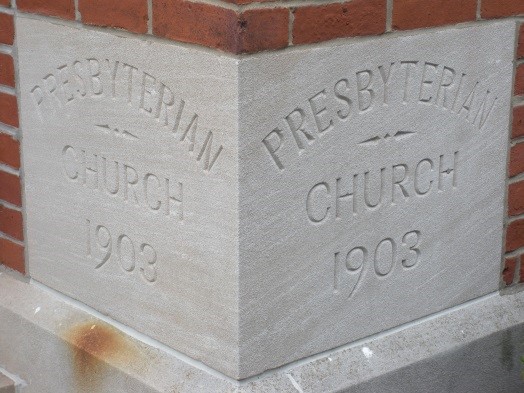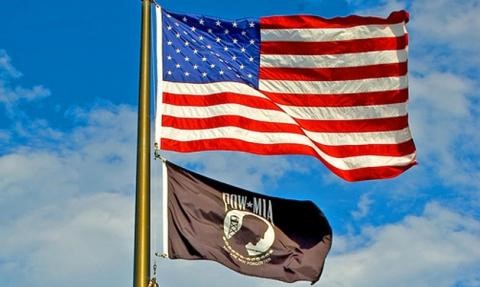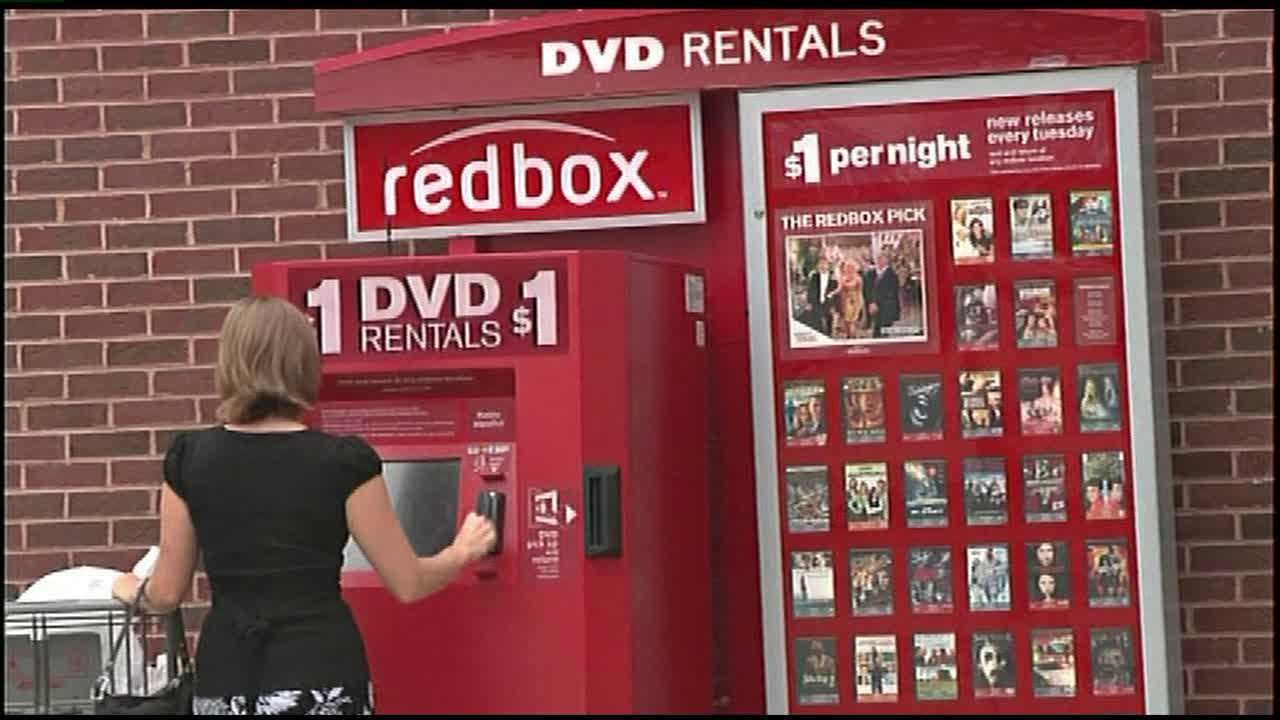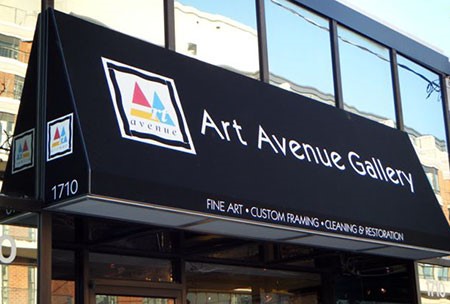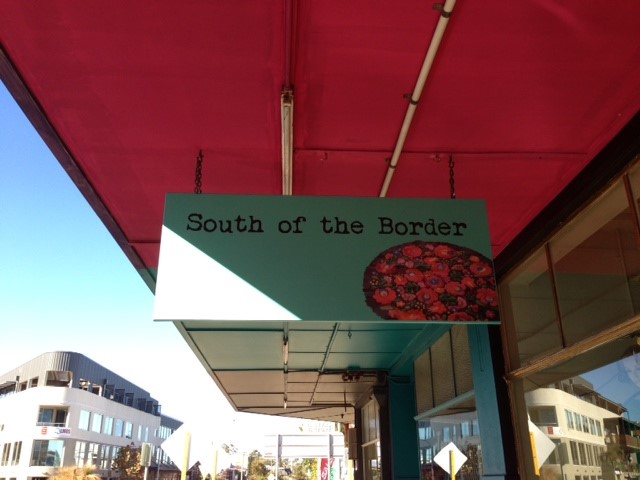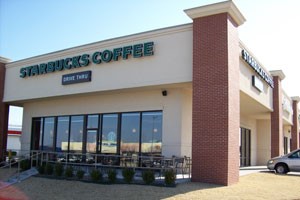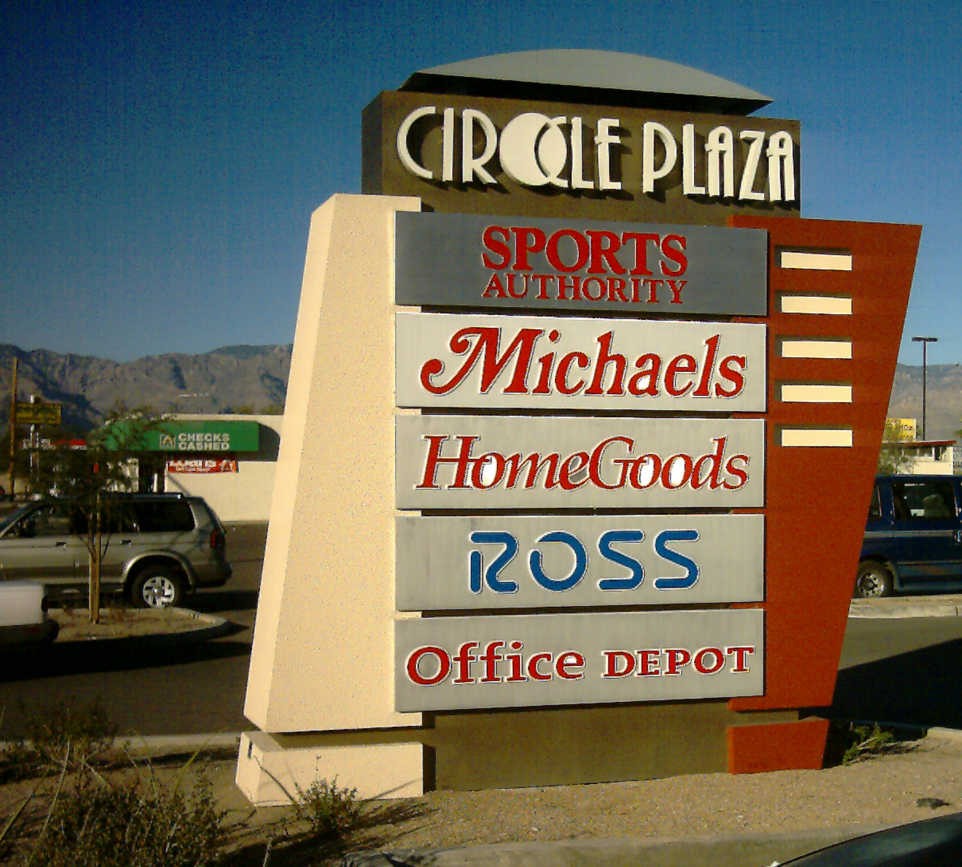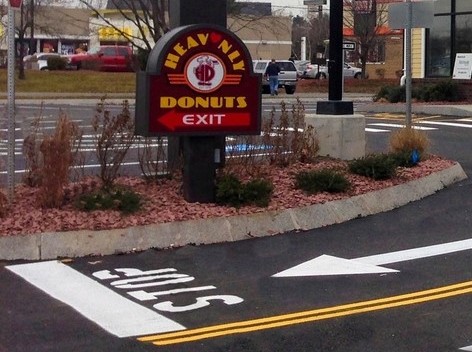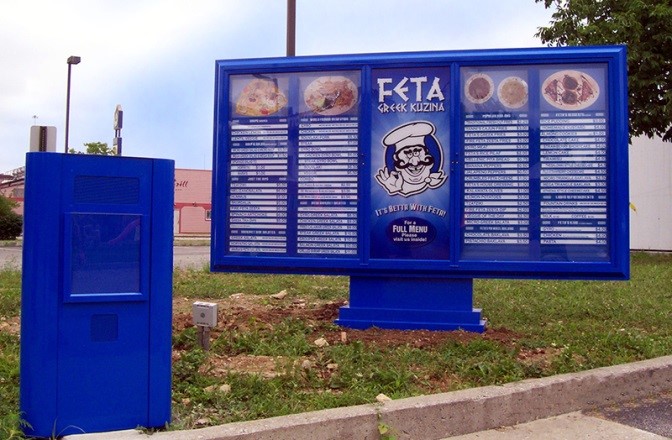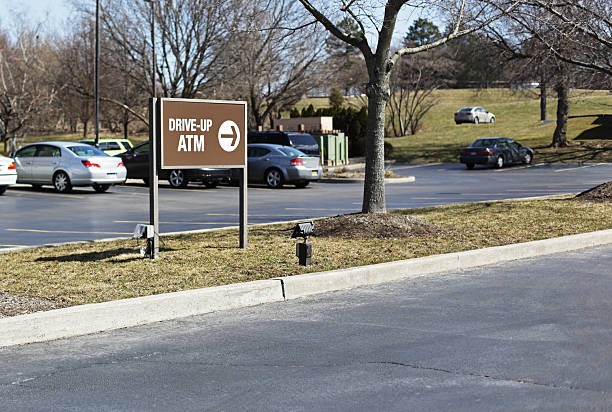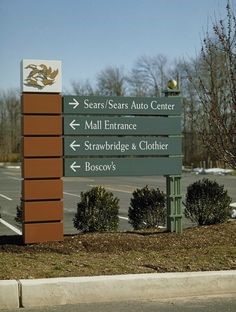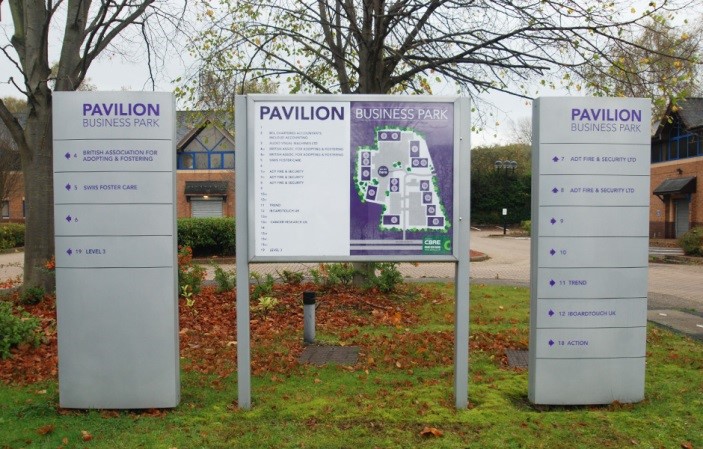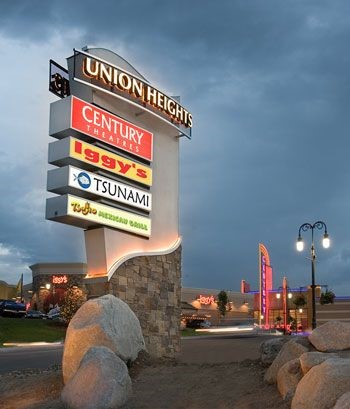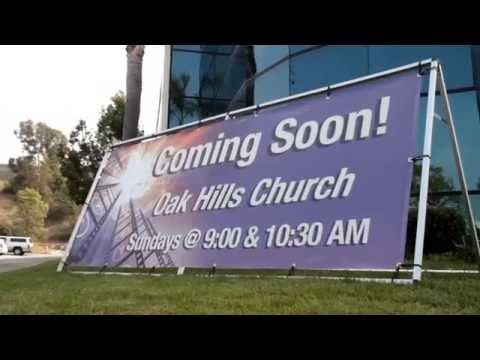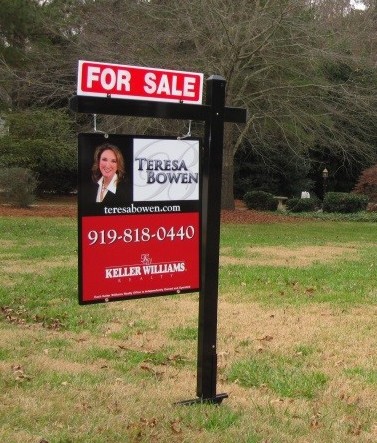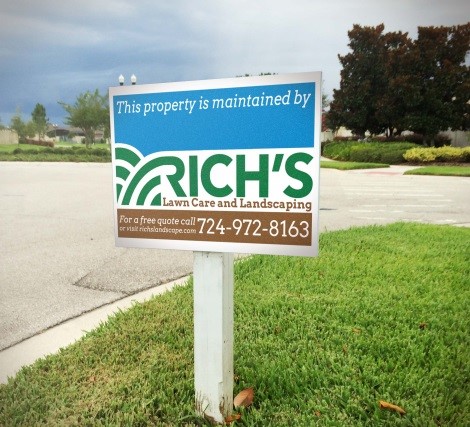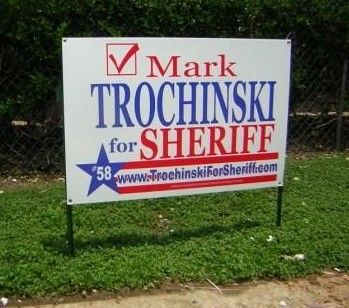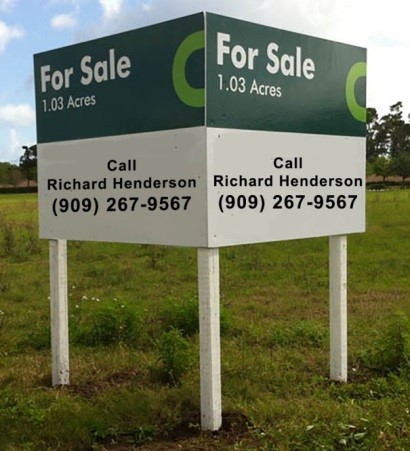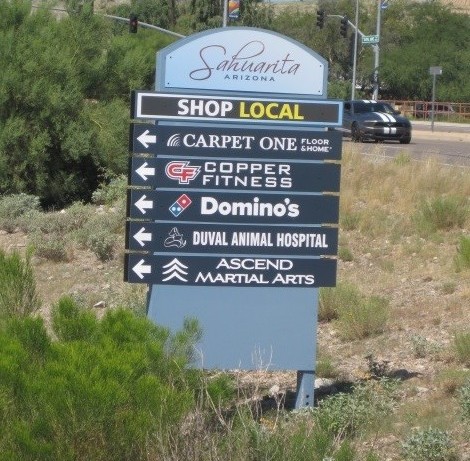Chapter 18.79
SIGN STANDARDS
Sections:
18.79.030 Measurement standards.
18.79.040 Location, design and maintenance standards.
18.79.050 Comprehensive sign plan.
18.79.060 Temporary off-site sign plan.
18.79.070 Sign administration.
18.79.080 Development standards by sign.
Prior legislation: Ords. 2010-31, 2010-41, 2011-043, 2011-048, 2011-058, 2012-073, 2015-098, 2015-105, 2015-106 and 2016-115.
18.79.010 Purpose.
It is the intent of this chapter to establish a framework of comprehensive sign standards for Sahuarita that reflect the community decision to preserve and enhance the natural, scenic desert environment of Sahuarita; promote the health, safety and welfare of the community; protect property values; allow flexibility, encouraging variety and good design; recognize the importance of appropriate signage for Sahuarita’s economic vitality; and allow adequate avenues for both commercial and noncommercial messages, recognizing free speech by regulating signs in a content-neutral manner. It is the purpose of this chapter to authorize the use of signs that:
A. Promote and accomplish the goals and policies of the general plan;
B. Facilitate economic development through the identification of businesses and organizations in the community;
C. Are aesthetically pleasing and of appropriate scale, are integrated with surrounding buildings and landscape in order to meet the community’s expressed desire for quality development, and which protect prominent viewsheds;
D. Protect astronomical observation and minimize light intrusion onto adjacent property;
E. Encourage legibility of sign information and the clearest possible visual perception of existing adjacent businesses and signs;
F. Promote the free flow of traffic and protect pedestrians and motorists from injury through well-designed signs that are unlikely to distract drivers to a dangerous degree;
G. Enhance wayfinding for Sahuarita’s residents and visitors; and
H. Prevent property damage, personal injury, and litter from signs which are improperly constructed, poorly maintained, or made of nondurable materials. [Ord. 2018-129 § 1; Ord. 2017-127 § 1.]
18.79.020 Exemptions.
The following are exemptions from the provisions of this chapter so long as they meet any applicable standards described below. Other permitting requirements, such as building, electrical, or right-of-way use permits, may apply.
A. Address displays less than 14 inches in height in rural and residential zones and 24 inches in height in business and industrial zones.
B. Content displayed on an entry door, not to exceed four square feet.
C. Permanent sign etched into the surface of a facade or building, not to exceed eight square feet or a plaque or tablet attached flat to the face of the building and not exceeding four square feet in area. Such signs shall not be illuminated.
D. Signs or displays not visible from any property line, provided the signs are permitted sign types.
E. Signs located within town-operated recreation facilities and installed by the town.
F. Governmental Signs. Any sign, posting, notice, or similar signs placed, installed or required by law by the town, county, or a federal or state governmental agency in carrying out its responsibility to protect the public health, safety, and welfare, including, but not limited to, the following:
1. Emergency and warning signs necessary for public safety or civil defense;
2. Traffic signs erected and maintained by an authorized public agency;
3. Signs required to be displayed by law;
4. Signs directing the public to points of interest; and
5. Signs showing the location of public facilities.
G. Noncommercial mural.
H. On-site signage up to four square feet for each business or other entity with an approved business license, whether home-based or not, provided:
1. There is no other on-site signage for the business;
2. No more than three such signs per property shall be exempt from the provisions of this chapter;
3. Such signage shall not be illuminated; and
4. Required setbacks shall be the main building setback for that zone except that for flag lots and other lots in which the main building is not visible from the right-of-way, the setback may be waived with approval from the planning and building director.
I. Signs internal to a recorded residential subdivision and posted and maintained by the homebuilder, developer, homeowners’ association, or similar organization, provided:
1. Maximum height: 12 feet for flags, six feet for all other signs.
2. Maximum area: 24 square feet per sign.
3. Location.
a. Such signs shall be situated to be read by persons already within the boundaries of the recorded subdivision, and not to draw persons from outside of the subdivision;
b. Such signs shall be set back a minimum of 15 feet from the boundaries of the recorded subdivision;
c. Such signs shall be placed on private property and not in the public right-of-way.
4. Illumination is prohibited.
J. Sign that is necessary to warn of danger, provided the sign shall be of no greater height or size than is required to give the public adequate warning.
K. Political signs in compliance with ARS 16-1019, provided the maximum sign area shall be 32 square feet in business and industrial zones and 16 square feet in rural and residential zones.
L. Noncommercial flags, emblems, or insignias.
M. Signage on Vehicles. Signs that are permanently painted or wrapped on the surface of a vehicle, adhesive vinyl film affixed to the interior or exterior surface of a vehicle window, or signs magnetically attached to a vehicle or rolling stock. Such vehicles shall be operable, properly licensed, and, when not being used to conduct business, parked or stored in a lawful and authorized manner on the business property; and signage on vehicles and equipment engaged in active construction projects, and the on-premises storage of equipment and vehicles offered to the general public for rent or lease. Signage mounted to the bed of a truck is not permitted.
N. A sign that is an integral part of a dispensing mechanism, such as a beverage machine or a newspaper rack.
|
Entry Door Content |
Permanent Etched Sign |
Noncommercial Flags |
|
Signage on Vehicles |
Signs Internal to a Subdivision |
Integral Dispenser Sign |
[Ord. 2018-129 § 1.]
18.79.030 Measurement standards.
A. Sign Area Measurement.
1. Background Panel. A sign placed on a background panel or surface distinctively painted, textured, or constructed as a background for the sign copy is measured as the area contained within the outside dimensions of the background panel or surface. A single sign may consist of multiple background panels to be measured individually.
2. Individual Letters or Symbols. A sign with individual letters or symbols placed separately on a building wall, awning or other structure without a background panel or distinct background surface is measured as the sum of the smallest rectangular shapes needed to enclose each word or symbol individually.
3. Illuminated Panel. A sign in an illuminated panel is measured as the entire illuminated surface area.
4. Multiple Components. A sign displayed in more than one component, e.g., a symbol and separate text, is measured as the area enclosed by the smallest rectangle encompassing each of the components individually.
5. Multiple-Face Sign.
a. A sign with two faces is measured as:
(1) The area of one face, if the interior angle between the faces is 45 degrees or less.
(2) The sum of the area of the two faces, if the interior angle is greater than 45 degrees.
b. A sign with three or more faces is measured as:
(1) Fifty percent of the sum of the area of all faces, if all interior angles between the faces are 45 degrees or less.
(2) The sum of the area of all faces, if an interior angle is greater than 45 degrees.
6. Spherical, free-form, sculptural or other nonplanar sign area is measured as 50 percent of the sum of the areas using only the four vertical sides of the smallest four-sided polyhedron that will encompass the sign.
B. Sign Height Measurement. The sign height is measured as the vertical distance from the average finished grade within an eight-foot radius from all sides of the sign at the base of the sign, exclusive of any filling, berming, mounding, or landscaping solely for the purpose of locating the sign, to the topmost feature of the sign, except:
1. If the sign location has an average finished grade lower than the adjoining grade of the road, the sign height is measured from the top of the curb (or crown of the road nearest the property if no curb exists) to the topmost feature of the sign; and
2. Sign post caps or detail features up to 16 inches in height may be excluded from the sign height measurement.
C. Clearance Measurement. Clearance is measured as the shortest vertical distance between the underside of the sign and the average finished grade beneath the sign.
D. Setback Measurement. Setback is measured from the edge of the sign structure closest to the property line. [Ord. 2018-129 § 1; Ord. 2017-127 § 1.]
18.79.040 Location, design and maintenance standards.
A. Location Standards. Except where specifically authorized in this chapter, signs are prohibited in the following locations:
1. Within a public right-of-way except as specifically provided in this chapter or as authorized by town council and the town engineer in unique circumstances or as may be approved through a comprehensive sign plan for temporary off-site signs.
2. Within a sight visibility triangle unless placed in accordance with town of Sahuarita technical standards and lower than 30 inches in height.
3. Within, on, or projecting over a property line, except as specifically provided in this chapter.
4. Attached to any public utility pole, structure or street light, tree, fence, fire hydrant, or other location on public property, except those signs approved as part of a special event permit on town property.
5. Painted, attached or mounted on tanks, storage containers and/or solid waste receptacles or their enclosures, except for a manufacturer’s or installer’s identification, appropriate warning signs and placards, and information required by law.
6. Signs located to obstruct the view of any authorized traffic sign, signal or other traffic control device.
7. Off-site.
B. General.
1. No sign shall resemble an official traffic signal or sign.
2. No sign shall extend above the roofline of the building upon which it is mounted.
3. No sign shall emit odor, smoke, or sound other than as needed for taking orders in a drive-through.
4. No sign shall be animated by any means, including fixed aerial displays, balloons, spinners, strings of flags and pennants, feather signs, streamers, tubes, or other devices affected by the movement of the air or other atmospheric or mechanical means, except those specifically permitted through a special sign display clearance.
5. No sign shall be painted onto a building, except an awning sign or a window sign.
6. Permanent, freestanding signs greater than six feet in height are required to conceal support structures that are architecturally dissimilar to the design of the sign with decorative elements that are a minimum of 25 percent of the width of the sign face.
C. Address Identification.
1. A sign shall conform to the requirements of the county street naming and addressing manual.
2. At least one sign visible from the street shall contain the street address of the development complex in numerals at least three inches tall.
D. Construction Standards.
1. A sign shall meet the standards of the town building codes.
2. Supports and braces shall be an integral part of the sign design. Angle irons, chains, or wires used for supports or braces shall be hidden from public view to the extent technically feasible.
E. Landscaping.
1. Freestanding signs may be integrated into required landscape bufferyards.
2. Design shall not permit plant or other materials to obstruct the visibility of the sign face from the street.
F. Illumination. The standards for individual sign types indicate whether illumination is allowed. When allowed, illumination shall be in conformance with these standards.
1. A sign shall comply with the standards of the town lighting code.
2. The following types of sign illumination are permitted:
a. Internal illumination where only sign copy emits light;
b. Halo lighting;
c. Area lighting;
d. Direct lighting, with top-mounted, full cut-off fixtures; and
e. Exposed neon incorporated into the design of the sign, to be allowed only in business and industrial zones.
3. An illuminated sign shall be turned off no later than 11:00 p.m., with the following exceptions:
a. If the business or other entity remains open after 11:00 p.m., an illuminated sign shall:
(1) Reduce the lighting source by 50 percent output from 11:00 p.m. until sunrise, as may be achieved by programmable electronic controls, timers, etc.; and
(2) Be turned off when the business or other entity closes.
b. Residential subdivision entryway signs may remain illuminated during all dark hours.
4. A light source of a sign shall not be visible from above or from an adjacent property or street, except as permitted in the town lighting code and zoning code.
5. Any unused tenant space on an approved sign shall be blanked out with an opaque panel to minimize light output.
6. When an alteration, such as a color inversion, is feasible and would reduce the light output of a corporate image or registered trademark, such alteration is strongly encouraged.
7. Any lighting device, whether on the exterior of a building or on the inside of a window which is visible beyond the boundaries of the lot or parcel, or from any public right-of-way, with intermittent, flashing, rotating, blinking or strobe light illumination, animation, motion picture, or laser projection, or any device creating the illusion of light motion is prohibited.
8. Strings of lights arranged in the shape of a product, arrow, or any commercial message are prohibited.
G. Manual Changeable Copy.
1. Manual changeable copy signs are permitted as follows:
a. Manual changeable copy signs are permitted in business and industrial zones except for single-family residential uses.
b. Manual changeable copy signs in residential zones are permitted for nonresidential and multifamily residential uses only.
2. Manual changeable copy signs are permitted only as an integral component of a monument sign.
3. Illumination. Manual changeable copy signs shall not be internally illuminated unless light output is minimized through one of the following options:
a. The use of blank, colored translucent inserts of a single color over all areas of the sign where copy is not present, or a translucent colored cabinet cover; or
b. The use of opaque inserts with translucent letters, numbers, or symbols, provided:
(1) Blank opaque inserts are used over all areas of the sign where copy is not present; and
(2) The opaque portion of all inserts is a uniform color.
4. The total manual changeable copy component of a sign may comprise up to 50 percent of the sign area of a monument sign. The balance of the sign area shall use permanently affixed letters or symbols.
5. When a development is allowed greater than one monument sign, only one such sign may contain a manual changeable copy component.
H. Electronic Messaging.
1. Electronic message signs are permitted as follows:
a. Electronic message signs are permitted in commercial and industrial zones except for single-family residential uses.
b. Electronic message signs in residential zones may be conditionally permitted subject to a Type 1 CUP per Chapter 18.97 STC.
2. Electronic message signs are permitted only as an integral component of a monument sign or canopy sign.
3. The electronic message sign shall be controlled by one or more photocells which will automatically adjust the display light output at sunset and will further adjust the display light output to a maximum of 50 percent of the allowed total at 11:00 p.m.
4. Prior to the issuance of permits for the electronic message sign, the applicant shall provide a written certification from the sign manufacturer that the light intensity has been factory preset not to exceed the levels specified in the stipulations above and in the outdoor lighting code, and the intensity level is protected from end-user manipulation by password-protected software. Post-installation commissioning may be required.
5. The total electronic messaging component of a sign may comprise up to 50 percent of the sign area of a monument sign or up to 12 square feet of a canopy sign. The balance of the sign area shall use permanently affixed letters or symbols.
6. Electronic messages may not change any more frequently than once every 30 seconds, with an immediate transition time.
7. There may be no effects of movement, flashing, scintillation, or similar effects.
8. Electronic messages must have a dark background.
9. When greater than one monument sign is allowed for a development, only one such sign may contain an electronic messaging component.
I. Maintenance. A sign shall be properly maintained in the following manner:
1. Defective or broken parts shall be replaced.
2. Exposed surfaces determined by the planning and building director to be substantially deteriorated shall be repaired.
3. A sign posing a safety hazard or a sign damaged to the extent of requiring a new building permit shall be removed or repaired. [Ord. 2018-129 § 1; Ord. 2017-127 § 1.]
18.79.050 Comprehensive sign plan.
A. Purpose. The purpose of a comprehensive sign plan is to provide for the establishment of signage criteria that are tailored to a specific development or location. The intent is to provide for flexible sign criteria that promote the purpose of this chapter through superior design and architectural integration of the site, buildings, and signs. A comprehensive sign plan is optional.
B. Generally.
1. Signs that are proposed as part of a comprehensive sign plan may deviate from the standards of this chapter in terms of the:
a. Types and numbers of signs allowed.
b. Sign locations and distribution of sign area budget.
c. Maximum height and sign area with planning and zoning commission approval as provided in this section.
2. Prohibited signs and sign elements are not eligible for inclusion in a comprehensive sign plan unless specifically indicated in this chapter.
3. Off-site signs shall not be included in a comprehensive sign plan.
4. A comprehensive sign plan shall not be used to propose temporary signs that are not in compliance with the regulations of this chapter.
C. Application and Review.
1. A comprehensive sign plan shall be submitted to the planning and building department for review and approval by the planning and building director prior to issuance of any individual permits for signs proposed in a comprehensive sign plan.
2. Required Elements. The comprehensive sign plan shall provide the following information:
a. A design theme with illustrative examples of each sign type.
b. The location, size, height, construction materials, color, type of illumination, and orientation of all existing and proposed signs.
c. Maximum numbers of tenant panels per sign face.
d. For all freestanding signs, setbacks from right-of-way and property lines.
e. For all attached signs, clearance below and context of placement on facades.
f. Total proposed sign area per frontage, per sign type, and overall for the project.
g. Maximum allowed sign area per frontage, per sign type, and overall for the project, and explanations of how the maximums were calculated.
h. If the applicant proposes a deviation from the standards set forth in this chapter, the following additional information shall be provided:
(1) A detailed explanation of the deviations being proposed.
(2) A written justification for the deviations.
3. Review of a comprehensive sign plan shall be guided by the following:
a. Overall presentation of the entire development, including landscaping, architecture, topography, uses, and design;
b. Consistency with the purpose of this chapter;
c. Any other applicable information that may be useful in the overall presentation of the proposed signage for the development.
D. Approval.
1. Approval Criteria. The planning and building director may approve a comprehensive sign plan if as proposed it will result in a substantially improved, comprehensive, and unified proposal, compared to what is allowed through strict compliance with all other provisions of this chapter. Any deviations to the number, dimensions, locations, or design characteristics of signs that are sought by an applicant shall be justified in writing and shall clearly demonstrate a standard of design and quality that exceeds those set out in this chapter. Such demonstration may include but is not limited to:
a. High quality construction materials, such as brick or natural stone;
b. Consistent sizes, styles, and colors across the development;
c. Enhanced landscaping around the sign base;
d. Greater spacing between signs along street frontages;
e. Fewer total number of signs; and/or
f. Signs of reduced heights and area.
2. Once approved, a comprehensive sign plan becomes the governing document for signs in a development, and permits will only be issued for signs shown on the comprehensive sign plan.
3. A comprehensive sign plan does not grant approval for the individual signs regulated by the comprehensive sign plan. Individual sign permits and clearances are required.
4. An existing nonconforming sign may be considered as part of a comprehensive sign plan.
5. With planning and zoning commission approval at a public hearing noticed per STC 18.91.060(A), a comprehensive sign plan may allow signage in which the total sign area budget for each sign type and height of freestanding signs exceeds the maximum otherwise allowed by five percent for each criterion met, up to a maximum of 20 percent. In no event may the comprehensive sign plan propose signage of a type that is otherwise prohibited by this chapter, and in no event may the height, number, or size of freeway-style signs exceed the maximum otherwise allowed. Increases in sign area budgets for a sign type or freestanding sign height shall be based on the following criteria:
a. An additional five percent for use of one or a combination of the following options in all illuminated signage:
(1) Halo illumination, prohibiting the use of white or off-white/ivory light sources; or
(2) Prohibition of the use of predominantly white or off-white/ivory internally illuminated lettering, logos or trademarks.
b. An additional five percent when each sign is related to all other signs maintained on the site by the incorporation of similar or identical elements, such as materials, sign copy, letter styles, color, illumination, method of attachment, and overall presentation.
c. An additional five percent for the use of native or natural, or native- or natural-look, sign construction materials or colors that are reflective of the surrounding desert and mountain environment, the purpose of which is improved and innovative sign design and an improved image of the use or development; a minimum of 75 percent of the sign structure shall be constructed of such native or natural, or native- or natural-look, materials.
d. An additional five percent for a sign plan that relates in form, proportion, scale, color, materials, surface treatment, overall sign size, and the size and style of the lettering to the function and architectural character of the building or premises on which they will be displayed, and which provides for signs that are placed in a logical location in relation to the overall composition of the building’s facade and do not cover any key architectural features or details of the facade.
E. Appeals. Any decision made by the planning and building director regarding a comprehensive sign plan may be appealed to the planning and zoning commission. Any decision made by the planning and zoning commission regarding a comprehensive sign plan may be appealed to the town council.
F. Amendment. Requests for amendments to previously approved comprehensive sign plans shall be submitted for review and approval by the planning and building director. The director may refer an amendment request to the planning and zoning commission in accordance with the procedures set forth in STC 18.91.060(A).
G. Light Pole Banner Program. A comprehensive sign plan for a site larger than 10 acres may include light pole banners in accordance with the following:
1. The banners shall be of new material and may be permanent, subject to planning and building department approval of a maintenance program.
2. Banners shall be suspended from an individual light pole or similar structure located on private property.
3. Maximum area: 12.5 square feet per banner.
4. Maximum height from grade to top of banner: 20 feet.
5. Maximum horizontal dimension: three feet.
6. Maximum vertical dimension: six feet.
7. Minimum clearance: eight feet.
8. Maximum number: as approved in a comprehensive sign plan. No more than two per supporting structure and displayed on no more than 25 percent of the site’s poles.
9. Maximum number of faces per sign: two.
10. Minimum setback: 20 feet.
H. Commercial Sign District. Property owners in business or industrially zoned areas may form a commercial sign district to propose and maintain a comprehensive sign plan as provided in this section.
1. A commercial sign district may be formed by petition of all property owners to be included in the district.
2. Proposals to create a commercial sign district shall be submitted to the planning and building director for review and approval. Applicants must demonstrate:
a. Safe and convenient vehicular and pedestrian connections throughout the proposed commercial sign district; and
b. Public benefit resulting from the creation of such a commercial sign district.
3. Properties to be included in a commercial sign district must be adjacent. Properties separated by a street shall be considered adjacent for the purpose of this provision, unless separated by a freeway.
4. A commercial sign district shall not encompass greater than four separate development plan areas or 100 acres.
5. A commercial sign district shall coordinate the preparation and submission of the comprehensive sign plan and shall be responsible for the installation and maintenance of signage approved in the comprehensive sign plan. [Ord. 2018-129 § 1; Ord. 2017-127 § 1.]
18.79.060 Temporary off-site sign plan.
A. Purpose. The purpose of a temporary off-site sign plan is to allow a means of additional advertisement for those users who may benefit from the use of temporary off-site signs and to improve wayfinding within the town. The intent is to provide for a coordinated and uncluttered look as may be achieved through sign spacing, numbers and design, using the least amount of signage needed to achieve wayfinding objectives.
B. Generally.
1. Planning and zoning commission approval at a public hearing is required for any temporary off-site sign plan.
2. Signs that are proposed as part of a temporary off-site sign plan may deviate from the standards of this chapter in terms of the types and numbers of signs allowed, as well as the sign locations.
3. Any temporary off-site sign plan that proposes sign placement in the right-of-way requires town engineer approval in addition to planning and zoning commission approval.
4. Any sign that requires ground penetration of greater than five inches for installation shall require blue staking and a right-of-way use permit prior to installation.
5. No sign materials shall remain in the right-of-way in between sign display periods.
6. Illumination is prohibited.
7. A zoning clearance for a temporary off-site sign shall not be issued until a sign plan for that sign has been approved.
C. Application and Review.
1. Application shall be submitted to the planning and building department for review. The director shall prepare a report for the planning and zoning commission analyzing the expected impact of the proposed temporary signs and shall make a recommendation on the proposed temporary off-site sign plan.
2. An organization may apply for a blanket temporary off-site sign plan on behalf of its membership.
3. The application shall contain at a minimum:
a. A completed application form and applicable fees. The fee shall be equivalent to a comprehensive sign plan fee;
b. A letter of authorization for agent, if the applicant is not the owner of the proposed temporary signs;
c. If signs are proposed on private property, a list of the properties and owners along with signed letters of permission from each property owner; and
d. The proposed temporary off-site sign plan.
4. Required Elements. The sign plan shall provide the following information:
a. A narrative describing the applicant’s wayfinding need and how the plan will meet that need.
b. A narrative describing how the proposed signage will fit with the surrounding built and natural environments and how installation and take-down methods will ensure the integrity of those environments.
c. A design theme with illustrative examples of each sign type.
d. A sign spacing concept plan that will achieve wayfinding goals while minimizing the total number of signs needed.
e. The sign area, height, construction materials, color, and orientation of all proposed signs.
f. A map or other drawing showing the exact location of any sign greater than three feet in height or eight square feet in area, and the general location, by 150-foot segment of roadway, for any other signs.
g. Illustrative photos for each 150-foot roadway segment being proposed for signage, demonstrating the existing condition of the roadway shoulder area.
h. Proposed display period for each sign type. Consideration may be given to greater numbers of signs with shorter display periods.
i. The proposed maintenance program for the signs.
5. Review of a temporary off-site sign plan shall be guided by the following:
a. Overall presentation of the sign program.
b. Consistency with the purpose of this chapter.
c. Potential for impact on right-of-way landscaping, irrigation and other underground facilities, and existing land uses along the proposed roadway segments.
d. Any other applicable information that may be useful in the overall presentation of the proposed signage.
6. The planning and zoning commission shall conduct a public hearing and may approve, deny, or continue for up to 90 days the proposed temporary off-site sign plan.
7. Appeals. Any appeal to the town council of the decision of the planning and zoning commission shall be filed within 30 days by the applicant or affected property owners.
D. Design Standards. Any sign proposed in a temporary off-site sign plan shall be subject to the following design standards:
1. Illumination is prohibited.
2. Temporary off-site signs shall not by animated by any means.
3. Temporary off-site signs shall comply with the location restrictions as outlined in STC 18.79.040(A).
4. Maximum Dimensions.
a. The majority of the signs proposed shall not exceed three feet in height and eight square feet in area.
b. No sign shall exceed six feet in height or 24 square feet in area.
c. No metal mounting stake greater than one-eighth-inch diameter shall be used without town engineer approval through a right-of-way use permit and blue staking prior to installation.
5. Materials and design shall be similar for all or most signs to promote a cohesive look for the wayfinding program.
6. All signs must be of sufficient weight and durability to withstand wind gusts and storms so as not to be blown over or become windborne.
7. Signs must be maintained in a manner free from chipping paint, visible cracks or gouges, loss of letters, or general deterioration.
E. Public Notice. A minimum of 15 days prior to the public hearing, the planning and building department shall cause notice to be published once in a newspaper with general circulation in the area involved.
F. Approval.
1. Approval Criteria. A temporary off-site sign plan may be approved if as proposed it will result in a well-designed, safe, and visually appealing wayfinding program for a specific sign user that is consistent with the purpose of this chapter.
2. Approval of a temporary off-site sign plan shall be valid for a period not to exceed 18 months. A one-time 12-month extension may be granted by the director by applicant request and with justification for the extension.
G. Amendment. Requests for amendments to previously approved temporary off-site sign plans shall be submitted for review by the planning and building director. If the director determines that the amendment is in substantial conformance with the approved plan, the director may approve the amendment administratively. If determined not to be in substantial conformance, the amendment shall be processed according to the provisions of this chapter as a new application. Determination of substantial conformance shall be by the planning and building director.
H. Revocation. Failure to comply with the conditions, stipulations, or terms of approval of the temporary off-site sign plan is a violation of this code and will be enforced as such. Repeated offenses shall be cause for revocation of the comprehensive sign plan. The sign plan may be revoked by the planning and zoning commission. [Ord. 2018-129 § 1; Ord. 2017-127 § 1.]
18.79.070 Sign administration.
A. Nonconforming Signs.
1. This chapter shall not apply to a sign, constructed with a valid permit, existing on December 13, 2017, which does not comply with this chapter, except as provided below.
2. Change of Use. A nonconforming sign shall comply with this chapter before the issuance of a certificate of occupancy which creates a change of use.
3. Damaged or Destroyed Sign. A nonconforming sign damaged to the extent of requiring a new building permit shall be replaced with a conforming sign.
4. Relocation. A nonconforming sign shall not be relocated without compliance with this chapter.
5. Alteration. A nonconforming sign shall not be altered to the extent of requiring a new building permit without being brought into compliance with all the regulations of this chapter.
6. Exceptions. The following alterations to nonconforming signs are permitted:
a. Copy or panel changes.
b. A light source may be changed to a more energy efficient lamp type in conformance with building codes.
B. Zoning Clearance.
1. A zoning clearance shall be required for all sign types, including sign copy changes and panel changes, unless otherwise specified.
2. Submittal. The applicant shall submit to the planning and building director:
a. A site plan for freestanding signs, including a north arrow, a legal description, dimensions of the required setbacks and location of the property lines, building frontages, roads, and proposed signs;
b. Elevations showing signs attached to a building, the building wall, building frontage length, and proposed and existing signs with their dimensions and areas; and
c. A sign description in the form of a detail of the proposed sign, showing the sign area dimensions, structural supports, height, clearance, copy, illumination, colors, and materials.
C. Fees. Fee schedules are set forth in Chapter 3.10 STC.
D. Setback Modifications. The procedure for modification of a sign setback is as set forth in Chapter 18.85 STC.
E. Enforcement. In addition to the general manner of enforcement provided in Chapter 18.95 STC (Compliance and Enforcement), the following provisions shall apply:
1. Beneficiary Presumed. The primary beneficiary of any sign installed in violation of this chapter is presumed to have authorized or caused, either directly or indirectly, the installation, use, or maintenance of the sign in violation of this chapter.
2. Removal of Sign Constructed without a Permit. A sign erected without a permit shall be removed or appropriate permits issued within 15 days of the date of the notice of violation. The building official may require removal of the sign for inspection.
3. Seizure of a Prohibited Temporary Sign. The planning and building director may seize a prohibited temporary sign after proceeding as follows:
a. If the sign is within the right-of-way of a state or town road, staff may seize the sign after confirming through the appropriate authority that the sign is in the right-of-way.
b. If the sign is not within the right-of-way of a state or town road, staff shall give notice that the sign violates the provisions of this chapter. The notice shall:
(1) Cite the zoning code provision being violated;
(2) State the date by which compliance must occur, allowing a reasonable time for compliance; and
(3) Be posted on the sign or in a conspicuous place on the property or mailed to the property owner.
(4) No seizure shall occur until after the compliance date in the notice.
4. The cost of removal of a sign by the town shall be borne by the party responsible for the erection and maintenance of the prohibited sign and/or the property owner, based on a determination by the planning and building director. An action for recovery of costs may be brought by the town attorney upon certification of costs by the planning and building director.
5. A sign seized by the planning and building director may be redeemed by the owner of the sign upon payment of a $25.00 recovery fee for the first sign, and $10.00 for each additional sign. If not redeemed within 14 days of seizure, a sign shall become town property and may be sold or otherwise disposed of as provided by law.
F. Abandoned Signs. Signs which advertise, identify, or give notice of a business which is no longer in operation, or an activity which has already occurred, are considered abandoned signs and shall be removed. Any vacant or unused sign support structure or remnants of signs no longer in use are also considered abandoned signs and shall be removed. A permanent, on-site sign which applies to a temporarily suspended business shall not be deemed to be abandoned unless the suspension exceeds six months.
G. Interpretations.
1. Whenever a conflict arises in the enforcement of this chapter or more than one interpretation is possible, the purpose statement of this section shall serve as a guideline in reaching a decision.
2. This chapter is not intended to and does not restrict speech on the basis of its content, viewpoint, or message. No part of this chapter shall be construed to favor commercial speech over non-commercial speech. A noncommercial message may be substituted for any commercial message displayed on a sign without the need for any approval or permit; provided, that the size and structure of the sign are not altered. To the extent any provision of this chapter is ambiguous, the term shall be interpreted not to regulate on the basis of the content of the message.
3. A sign subject to inconsistent requirements of any federal, state or town statute, ordinance or regulation shall meet the most restrictive requirement.
4. Nothing in this chapter shall be construed to prohibit a person from holding a sign while picketing or protesting on public property that has been determined to be a traditional or designated public forum, so long as the person holding the sign does not block ingress and egress, create a safety hazard by impeding travel, or violate any other reasonable time, place, and manner restrictions adopted by the town.
H. Penalties. In accordance with STC 18.95.040 (compliance and enforcement), the minimum fine for violation of this chapter shall be $50.00 per violation per day. [Ord. 2018-129 § 1; Ord. 2017-127 § 1.]
18.79.080 Development standards by sign.
A. Overlay Zones. Signs in overlay zones shall be regulated by the underlying zone.
B. Attached Signs.
1. Sign Placement.
a. Attached signs shall not cover or obscure an architectural feature, such as a window, door, entryway, cornice, sill, or fire escape, except for minor changes that may be considered as part of a tenant improvement permit.
b. No illuminated sign shall face an adjoining residential zone.
2. Canopy Signs.
a. Minimum clearance: eight feet.
b. Maximum aggregate sign area may be distributed among any one, two, or three canopy elevations.
c. If an entity is allowed an electronic messaging component on a freestanding sign, up to 12 square feet of the allowed electronic messaging area may be transferred to a canopy and shall be calculated as part of the aggregate canopy sign area.
|
|
|
|
Zoning Districts |
||
|---|---|---|---|
|
|
Rural |
Residential |
Business and Industrial |
|
Allowed |
NR |
No |
Yes |
|
Maximum number |
NA |
NA |
NA |
|
Maximum aggregate sign area (sq. ft.) |
40 |
NA |
40 |
|
Maximum lettering height (ft.) |
3 |
NA |
3 |
|
Minimum property line setback (ft.) |
ZD |
NA |
ZD |
|
Illumination |
Yes |
NA |
Yes |
|
Table Notes: NR. Allowed for nonresidential uses. Yes. The sign type or characteristic is permitted. No. The sign type or characteristic is not permitted. NA. The standard is not applicable. ZD. As established by the applicable zoning district. |
|||
3. Awning Signs.
a. Minimum clearance: eight feet.
b. Awning signs are permitted only when there is no wall sign on the same building frontage.
|
|
|
|
Zoning Districts |
||
|---|---|---|---|
|
|
Rural and Residential |
Business |
Industrial |
|
Allowed |
NR, MF |
Yes |
Yes |
|
Maximum number per tenant |
2 |
2 |
2 |
|
Maximum number per street frontage |
1 |
1 |
1 |
|
Sign area allotment (sq. ft. per linear foot of awning) |
1 |
1.5 |
2 |
|
Maximum sign area (sq. ft. per sign) |
30 |
40 |
50 |
|
Minimum property line setback (ft.) |
ZD |
ZD |
ZD |
|
Illumination |
Yes |
Yes |
Yes |
|
Table Notes: NR. Allowed for nonresidential uses. MF. Allowed for multifamily uses. Yes. The sign type or characteristic is permitted. ZD. As established by the applicable zoning district. |
|||
4. Projecting and Suspended Signs.
a. A projecting sign shall not extend more than five feet from the face of the building and shall not extend above the roofline.
b. A projecting sign may not extend into any portion of the right-of-way except as may be authorized by town council through a temporary revocable easement.
c. Minimum clearance: eight feet.
d. A projecting or suspended sign shall not be mounted above the second story of a building.
e. All projecting signs shall be attached at right angles to the supporting structure in a manner consistent with the applicable building code.
|
Projecting Sign |
Suspended Sign |
|
|
Zoning Districts |
|
|---|---|---|
|
|
Rural and Residential |
Business and Industrial |
|
Allowed |
NR, MF |
Yes |
|
Maximum cumulative number of projecting and suspended signs per tenant |
2 |
2 |
|
Maximum number per street frontage for each tenant |
1 |
1 |
|
Maximum sign area (sq. ft. per sign) |
6 |
12 |
|
Minimum horizontal spacing from other signs (ft.) |
5 |
5 |
|
Minimum property line setback (ft.) |
* |
* |
|
Illumination |
Yes |
Yes |
|
Table Notes: NR. Allowed for nonresidential uses. MF. Allowed for multifamily uses. Yes. The sign type or characteristic is permitted. *Projecting signs may project into any required front, rear, or side setback unless adjoining a rural or residential zone. If adjoining a rural or residential zone, no part of a projecting sign may be closer than 20 feet to the adjoining rural or residential property line. |
||
5. Building Wall Signs.
a. Wall signs shall not extend above the roofline.
b. Signs shall be placed at least 12 inches or 20 percent of the width of the building element on which they are mounted, whichever is less, from the sides of the building element.
c. Signs shall be placed at least 12 inches or 20 percent of the height of the building element on which they are mounted, whichever is less, from the top and bottom edge of the building element.
d. If vertically placed on a mansard roof, structural supports shall be minimized and secondary supports (angle irons, guy wires, braces) shall be enclosed or hidden from view.
e. The total sign area for multitenant buildings with interior tenant spaces using centralized entrances may be placed on any building elevation.
f. The total sign area for signs on multitenant buildings with individual entrances:
(1) Shall be located on the building frontage designated for that tenant on the site plan, or as may be approved through a comprehensive sign plan; and
(2) Shall be limited to a maximum of two building frontages except as may be approved through a comprehensive sign plan or as may be specifically permitted in this chapter.
g. If a business does not have a monument sign or other permanent freestanding identification, or any signage on a shared sign structure:
(1) The total sign area for two building walls may be increased by 10 percent for each wall, but may not exceed the maximum allowable wall sign area for that zone as provided in Table 18.79-4; and
(2) A third and fourth building wall may each contain wall signs not exceeding 30 square feet in area.
h. Tenant spaces of 80,000 square feet gross floor area or greater are permitted to increase the maximum wall sign area per building frontage by 25 percent over the maximum area otherwise allowed. Use of this provision shall not preclude eligibility for the 20 percent sign budget increase available with approval of a comprehensive sign plan as described in STC 18.79.050.
i. Tenant spaces with building frontage immediately adjacent to and visible from the I-19 right-of-way shall be permitted a 25 percent increase in maximum wall sign area to be placed on the qualifying building side.
j. Potential sign area increases, including increases available through approval of a comprehensive sign plan, are combinable but shall be calculated from the base maximum sign area allotment, not from the increased sign area.
|
|
|
|
Zoning Districts |
|||
|---|---|---|---|---|
|
|
Rural and Residential |
MR, NC, MX |
B-1, B-2 |
Industrial |
|
Allowed |
NR, MF |
Yes |
Yes |
Yes |
|
Sign area allotment (sq. ft. per linear foot of building frontage) |
NA |
1.25 |
1.5 |
2 |
|
Maximum sign area (sq. ft. per allowed building frontage for each tenant) |
30 |
150 |
225 |
250 |
|
Illumination |
Yes |
Yes |
Yes |
Yes |
|
Table Notes: NR. Allowed for nonresidential uses. MF. Allowed for multifamily uses. Yes. The sign type or characteristic is permitted. NA. The standard is not applicable. |
||||
6. Window Signs.
a. A zoning clearance is not required for a window sign.
b. Window signs shall not be mounted above the second story of a building.
|
|
|
|
Zoning Districts |
|
|---|---|---|
|
|
Rural and Residential |
Business and Industrial |
|
Allowed |
No |
Yes |
|
Maximum sign area (percent of window area per tenant space) |
NA |
30% |
|
Illumination |
NA |
Limited to 15% of total window area per tenant space |
|
Table Notes: Yes. The sign type or characteristic is permitted. No. The sign type or characteristic is not permitted. NA. The standard is not applicable. |
||
C. Freestanding Signs.
1. Monument Signs.
a. Design Standards.
(1) The sign base shall have a minimum aggregate width of 60 percent of the width of the sign cabinet or face.
(2) The materials of the base and cabinet of a monument sign shall be masonry, stone, decorative concrete, or other materials that match or complement the building materials and colors of the primary building.
(3) Monument signs may contain a maximum of six tenant panels plus one additional item of information that is visually separate from the tenant panels.
(4) No single tenant panel shall be smaller than eight square feet in size.
b. Flexibility Options.
(1) If a monument sign is located on a corner lot so as to be visible from only one street:
(a) That street frontage length shall be used to calculate maximum dimensions for that sign, and the corner sign shall be counted towards the maximum number of signs for that frontage; and
(b) If the corner sign uses only a portion of the maximum sign area for that street frontage, the remaining portion of the sign area allotment may be used for other monument signs; provided, that the maximum number of signs for that street frontage is not exceeded.
(2) If a monument sign is located on a street corner so as to be visible from both streets:
(a) Linear frontage from either street individually or both streets combined may be used to calculate sign area as a function of street frontage, and the corner sign shall be counted towards the maximum number of signs for one of the streets; and
(b) If the corner sign uses only a portion of the maximum sign area per street frontage, the remaining portion of the sign area allotment for that street may be used for other monument signs; provided, that the maximum number of signs per street frontage is not exceeded.
(3) Monument signs of a height lower than the allowed maximum are permitted a 15 percent area increase for each foot of height reduction.
(4) A property allowed a monument sign may substitute a sign on a perimeter/landscape wall for a monument sign. The maximum area of such a perimeter wall sign shall be 55 square feet.
|
Monument Sign with Five Tenant Panels and One Additional Item of Information |
|
Allowed |
NR, MF |
|
Maximum number per street frontage |
1 |
|
Maximum area per sign (sq. ft.) |
32 |
|
Maximum height (ft.) |
6 |
|
Minimum setback (ft.) |
Front and street side lot lines: 0 feet from property line and a minimum of 5 feet from the closest edge of sidewalk Interior side lot lines: 10 feet |
|
Illumination |
Yes |
|
Table Notes: NR. Allowed for nonresidential uses. MF. Allowed for multifamily uses. Yes. The sign type or characteristic is permitted. |
|
|
Allowed |
NR, MF |
|
Maximum number per street frontage |
1 |
|
Maximum area per sign (sq. ft.) |
40 |
|
Maximum height (ft.) |
8 |
|
Minimum setback (ft.) |
Front and street side lot lines: 0 feet from property line and a minimum of 5 feet from the closest edge of sidewalk Interior side lot lines: 10 feet |
|
Illumination |
Yes |
|
Table Notes: NR. Allowed for nonresidential uses. MF. Allowed for multifamily uses. Yes. The sign type or characteristic is permitted. |
|
|
Allowed |
NR, MF |
|
Maximum number Fractional numbers up to 0.49 shall be rounded down, and fractional numbers of 0.5 or greater may be rounded up. |
1 per street frontage, or 1 per 330 feet of linear street frontage, whichever is greater. See example below. |
|
Maximum area per street frontage (sq. ft.) Fractional increments may be computed, and sign area allotment may be allocated along the relevant street frontage in any manner. |
55 square feet, or 55 square feet per 330 feet of linear street frontage, whichever is greater. See example below. |
|
Maximum height (ft.) Maximum height for each sign is based on the linear feet of frontage for the street on which the sign is located. |
Below 330 feet of street frontage: 8 feet 330 – 660 feet of street frontage: 10 feet Above 660 feet of street frontage: 12 feet |
|
Minimum setback (ft.) |
Front and street side lot lines: 0 feet from property line and a minimum of 5 feet from the closest edge of sidewalk Interior side lot lines: 30 feet or 1/4 of the lot frontage, whichever is less |
|
Minimum spacing from other monument signs (ft.) |
165 feet |
|
Illumination |
Yes |
|
Table Notes: NR. Allowed for nonresidential uses. MF. Allowed for multifamily uses. Yes. The sign type or characteristic is permitted. Example: A corner property, zoned B-2, with two street frontages: (1) 280 feet of frontage; and (2) 720 feet of frontage: Allowable signage for street frontage 1 of 280 linear feet: Maximum number: 1 (less than 330 feet of frontage always gets 1) Maximum area: 55 square feet (less than 330 feet of frontage always gets up to 55 square feet) Maximum height: 8 feet Allowable signage for street frontage 2 of 720 linear feet: Maximum number: 720/330 = 2.18 Round down to 2 Maximum area: 720/330 = 2.18 2.18 x 55 = 120 square feet Maximum height: 12 feet Property owner may choose to place one or two signs of up to 12 feet in height, with total aggregate sign area not to exceed 120 square feet. |
|
2. Access Point Signs.
a. Access point signs are allowed at vehicular access points on arterial and collector roadways in business and industrial zones for premises with more than one vehicular access point.
b. Maximum area: six square feet.
c. Maximum height: four feet.
d. Maximum number: no more than one per vehicular access point.
|
|
3. Internal Signs.
a. Drive-Through Signs. Developments with drive-through uses are permitted signage adjacent to the drive-through lane(s), provided:
(1) Maximum area: 30 square feet per sign.
(2) Maximum height: six feet.
(3) Maximum number: two per drive-through lane.
(4) Additional Signs Permitted. One additional sign per drive-through lane, not exceeding four feet in height and six square feet in area, is permitted.
(5) Any such sign that includes a speaker shall not be audible from an adjoining rural or residential zone.
b. Multitenant Development Complex Signs. Development complexes with greater than five tenants and three acres or more total land area are permitted internal signs, provided:
(1) Maximum area: 40 square feet per sign.
(2) Maximum height: eight feet.
(3) Maximum number: one per acre or fraction thereof.
(4) Additional Signs Permitted. An unlimited number of signs not exceeding four feet in height and 12 square feet in area are permitted.
c. Minimum Setbacks.
(1) Twenty feet from an adjoining rural or residential zone.
(2) Fifteen feet from any other property line.
d. Exceptions to these regulations may be considered as part of a comprehensive sign plan.
|
Drive-Through Sign |
Drive-Through Sign |
|
Multitenant Development Complex Sign |
Multitenant Development Complex Sign |
4. Freeway Style I Sign. A business located on a property that is wholly or partially within 250 feet of a freeway right-of-way may have a freeway style I sign in accordance with the following:
a. A property or development complex with a freeway style II sign shall not be permitted a freeway style I sign.
b. Maximum number: one per development complex or commercial sign district.
c. Maximum Area.
(1) Signs containing a single tenant panel may not exceed 150 square feet in total sign area with a zero setback from the freeway right-of-way.
(2) Sign area may be increased by one of the following methods:
(a) Sign area may be increased by one square foot per foot of setback from the freeway right-of-way, not to exceed a maximum area of 240 square feet; or
(b) Signs for properties with more than one tenant may increase the overall sign area above 150 square feet by 45 square feet for each additional tenant panel up to a maximum of 240 square feet of total sign area. Each tenant panel shall have a minimum area of 45 square feet.
d. Maximum Height.
(1) Twenty feet above the grade of the freeway;
(2) The height may be increased one-half foot per foot of setback from the freeway right-of-way, but may not exceed a maximum of 25 feet above the freeway grade.
e. Maximum number of faces per sign: two.
f. Minimum site area: 20,000 square feet.
g. Sign Location.
(1) No setback is required from the freeway right-of-way; however, the sign shall be set back a minimum of 25 feet from all other property lines.
(2) The sign in its entirety must be located within 280 feet of the freeway right-of-way and must be located and oriented so as to be visible primarily from the freeway.
(3) No part of the sign may be located within 100 feet of a rural or residential zone.
h. Design.
(1) The sign and its supporting structure shall be designed and constructed using themes, materials, and colors compatible with the overall design of the applicable property, development complex, or commercial sign district.
(2) The sign base shall have a minimum aggregate width of 30 percent of the widest part of the sign face, and a minimum of 60 percent of the sign base’s width shall be enclosed.
|
|
5. Freeway Style II Sign.
a. A property with a freeway style I sign shall not be permitted a freeway style II sign.
b. All freeway style II signs shall require a Type II conditional use permit in accordance with Chapter 18.97 STC (Conditional Use Procedures) and with the following provisions:
(1) Upon application the applicant shall submit a viewshed analysis for rural or residentially zoned parcels within the notification area and shall demonstrate the daytime and nighttime impact such a sign would have on these areas.
(2) A 1,000-foot notification radius shall apply.
(3) The planning and zoning commission may impose specific additional conditions or requirements in connection with any conditional use permit as deemed necessary or appropriate in order to fully carry out the provisions and purpose of this chapter.
c. Maximum number: No more than one freeway style II sign shall be permitted per commercial quadrant of freeway interchange.
d. Maximum area: 460 square feet total sign copy; however, no single tenant panel shall be allowed greater than 180 square feet or less than 45 square feet.
e. Maximum height: 48 feet above base grade; however, the maximum height shall not exceed 55 feet above the centerline of the adjacent freeway travel lanes.
f. Maximum number of faces: two.
g. Sign Location.
(1) No setback is required from the freeway right-of-way; however, the sign shall be set back a minimum of 30 feet from all other lot lines.
(2) The sign in its entirety must be located within 100 feet of the freeway right-of-way and must be oriented so as to be visible primarily from the freeway.
(3) No part of the sign may be located within 250 feet of a rural or residentially zoned or used parcel.
h. Design.
(1) The sign may contain up to six tenant panels plus one additional item of information.
(2) The sign structure must be designed and constructed using themes, materials, and colors compatible with the overall design of the development.
(3) A minimum of three colors and two materials must be incorporated into the sign structure design.
(4) The sign base shall have a minimum aggregate width of 80 percent of the widest part of the sign face, and a minimum of 60 percent of the sign base’s width shall be enclosed.
|
Freeway Style II Sign with Four Tenant Panels and One Additional Item of Information |
6. Residential Subdivision Entryway Signs.
a. Applicability. This sign type applies to any residential or mixed use subdivision, including all sections and phases of the subdivision collectively. The number and area of signs apply to the overall subdivision, and the allowance for secondary signs does not apply separately to each individual section or phase.
b. Primary entrance signs are located at the primary entrance(s) into the subdivision as determined by the applicant.
c. Secondary entrance signs are located at entrances into the subdivision other than the primary entrance(s).
|
Primary Entryway Sign |
Secondary Entryway Sign |
|
|
Primary Entryway Signs |
Secondary Entryway Signs |
|---|---|---|
|
Maximum number |
Two per subdivision, and no more than one per entrance |
No more than one per entrance |
|
Maximum area per sign (sq. ft.) |
40 |
16 |
|
Maximum height (ft.) |
8 |
5 |
|
Minimum setbacks (ft.) |
0 feet from property line and a minimum of 5 feet from the closest edge of sidewalk |
No setback required |
D. Temporary Signs.
1. Location and Design Standards.
a. Location.
(1) Temporary signs are allowed only on site on private property except as may be approved through a temporary off-site sign plan.
(2) Temporary freestanding signs shall be located at grade level.
(3) Placement of temporary signs must allow for a minimum four-foot-wide clear pedestrian pathway.
b. Types and Materials. Temporary signs are classified into four types: banner, stake, post, and A-frame or upright signs.
(1) Banners shall be constructed of vinyl or plastic. Mounting mechanisms for freestanding banners shall be of rigid, durable materials installed in such a manner as to prevent bending or collapsing of the banner.
(2) Stake signs shall be constructed of plastic, vinyl, wood, or metal.
(3) Post signs shall be constructed of wood or metal.
(4) A-frame or upright signs shall be constructed of plastic, vinyl, wood, or metal.
(5) All signs must be of sufficient weight and durability to withstand wind gusts and storms so as not to be blown over or become windborne.
(6) Sign structures shall be professionally manufactured.
c. No attachments, illumination, ribbons, flags, balloons, moving or flashing parts, or similar are allowed with the sign.
d. Signs must be maintained in a manner free from chipping paint, visible cracks or gouges, loss of letters, or general deterioration.
e. No sign shall emit smoke, odor, or sound.
2. Development Standards by Sign.
|
Freestanding Temporary Banner |
Wall-Mounted Temporary Banner |
|
|
Zoning Districts |
||
|---|---|---|---|
|
|
Rural and Residential |
Business and Industrial |
|
|
Allowed |
NR, MF |
Yes |
|
|
Zoning clearance required |
Yes |
Yes |
|
|
Maximum number per tenant |
2, but no more than 1 per street frontage |
2, but no more than 1 per street frontage |
|
|
Maximum sign area (sq. ft.) |
60 |
60* |
|
|
Maximum display period |
15 days, no more than once per 90-day period** |
15 days, no more than once per 90-day period** |
|
|
Minimum spacing between other temporary signs (ft.) |
15 |
15 |
|
|
Minimum property line setback (ft.) |
5 |
5 |
|
|
Illumination |
No |
No |
|
|
Table Notes: NR. Allowed only for nonresidential uses. MF. Allowed only for multifamily uses. Yes. The sign type or characteristic is permitted. *Maximum sign area in business and industrial zones may be increased by one square foot for every two feet of setback above 50 feet, not to exceed a maximum of 85 square feet. **Maximum display period may be extended under the following circumstances: |
|||
|
• |
When a new occupancy or use is established, one additional 15-day display period may be granted within the first 90 days of establishment of the new occupancy or use. In special circumstances, such as the inability to obtain a permanent sign prior to the end of the display period, the display period may be extended by request and with justification for a period of up to 60 additional days, yielding a total display period of up to 90 days. |
||
|
• |
When an existing occupancy or use intends to cease operation, one additional 15-day display period may be granted within the 90 days prior to the intended closing date. |
||
|
• |
For temporary uses, the maximum display period is the duration of the temporary use. |
||
|
|
|
|
|
Allowed |
SFR |
|
Zoning clearance required |
No |
|
Maximum number per property |
Any number of temporary stake signs with noncommercial messages is permitted. Up to two temporary stake signs with commercial messages are permitted at one time. |
|
Maximum sign area (sq. ft.) |
6 |
|
Maximum height (ft.) |
5 |
|
Maximum display period |
Not limited |
|
Minimum property line setback (ft.) |
2 |
|
Illumination |
No |
|
Table Notes: SFR. The sign type or characteristic is permitted only for single-family residential uses. No. The sign type or characteristic is not permitted. |
|
|
|
|
|
Zoning Districts |
||
|---|---|---|---|
|
|
Rural and Residential |
Business and Industrial |
|
|
Allowed |
NR, MF, MHC |
Yes |
|
|
Zoning clearance required |
Yes |
Yes |
|
|
Maximum number |
2, but no more than 1 per street frontage |
2, but no more than 1 per street frontage |
|
|
Maximum aggregate sign area (sq. ft.) For all temporary post signs combined |
For nonresidential site with buildings |
32 |
64 |
|
For all other properties |
128 |
128 |
|
|
Maximum height (ft.) |
8 |
12 |
|
|
Maximum display period |
360 days, renewable if property is still available for sale, rental, or lease or under construction* |
360 days, renewable if property is still available for sale, rental, or lease or under construction* |
|
|
Minimum spacing from other temporary signs (ft.) |
10 |
10 |
|
|
Minimum property line setback (ft.) |
0 feet from property line and a minimum of 5 feet from the closest edge of sidewalk |
0 feet from property line and a minimum of 5 feet from the closest edge of sidewalk |
|
|
Illumination |
No |
No |
|
|
Table Notes: NR. Allowed for nonresidential uses.1 MF. Allowed for multifamily uses.1 MHC. Allowed in common areas and model home complexes for single-family residential subdivisions with lots or units available for sale.1 1. Temporary post signs are allowed only for properties with units or lots for sale, rental, or lease, or under construction. Yes. The sign type or characteristic is permitted. No. The sign type or characteristic is not permitted. * Sign must be removed after the complete sale, rental, lease, or construction of the property, or the termination of a subdivision’s active on-site sales program. |
|||
|
A-Frame Sign |
Upright Sign |
|
Allowed |
NR, MF |
|
Zoning clearance required |
No |
|
Maximum number per tenant |
1 |
|
Maximum sign area (sq. ft.) |
6 |
|
Minimum height (ft.) |
2.5 |
|
Maximum height (ft.) |
3.5 |
|
Maximum display period |
Not limited, but shall be removed at the end of each business day |
|
Minimum spacing from all other temporary signs (ft.) |
15 |
|
Minimum property line setback (ft.) |
None, but signs must be located within 5 feet of the main building facade |
|
Illumination |
No |
|
Table Notes: NR. Allowed for nonresidential uses. MF. Allowed for multifamily uses. No. The sign type or characteristic is not permitted. |
|
E. Special Sign Displays. A zoning clearance may be granted for an on-site special sign display subject to the following:
1. Special sign displays are permitted in business and industrial zones.
2. Special sign displays shall be subject to the requirements of subsection (D)(1) of this section.
3. A special sign display is permitted once every 90 days and is valid for a period of seven days, except:
a. When a new occupancy or use is established, the display period may be extended to 30 days within the first 90 days of establishment of the new occupancy or use.
b. When an existing occupancy or use intends to cease operation, the display period may be extended to 30 days within the 90 days prior to the intended closing date.
4. Up to 150 aggregate square feet of temporary signage may be displayed and may be composed of:
a. Strings of flags or pennants;
b. A maximum of four feather signs, up to eight feet in height and two feet in width;
c. A maximum of four A-frame or upright signs, up to three and one-half feet in height and six square feet in area;
d. Window signs not to exceed 20 percent of total window area above the amount allowed in subsection (B)(6) of this section;
e. A maximum of one stuffed or inflatable animal, character, or other object, not to exceed eight feet in height; and/or
f. Balloon bobbers not to exceed six feet in height.
5. Sign displays and any related equipment, such as blowers, electrical cords, or support systems, shall not impede pedestrian or vehicular circulation, or emergency access.
6. No sign shall extend above the roofline of the building upon which it is mounted.
7. Minimum setback for sign displays shall be five feet from any property line.
F. Human Signs.
1. Human signs shall be held relatively still at all times.
2. Area. Maximum of 20 square feet and a minimum of four square feet. The sign is measured by multiplying the overall width and overall length of the sign.
3. Location. No human sign shall be held within a median or in the intersection sight visibility triangle in a manner that obstructs the required clear space view for drivers and cyclists. Human signs:
a. Are prohibited within construction zones.
b. Are limited to two per street corner.
c. May not be located within 20 feet of another human sign.
d. Shall be held a minimum of 10 feet from the paved surface of a roadway.
4. Maximum number: no more than two human signs permitted per business or organization.
5. Zoning Clearance. The zoning clearance shall be a three-day temporary sign clearance subject to the current fee schedule. Only one clearance per business or other entity shall be allowed within a 90-day period.
6. Maximum number of faces per sign: two.
|
|
G. Town Sign Structure. The town may administer a program to allow off-site signs to be displayed on town-approved sign structures within the right-of-way. The town sign structure program shall be governed by the following regulations:
1. Location. Permitted in any zone; provided, that they are located on arterial or collector streets.
2. Structure Height and Width. Each town sign structure shall not exceed eight feet in height and six feet in width.
3. Individual Sign Dimension. Each sign on the town sign structure shall not exceed 12 inches in height and six feet in length.
4. The contracting entity shall provide signs in an approved town sign structure to any individual who maintains a valid Sahuarita business license and who requests such signs, consistent with town approval of the appropriate sign structure.
5. Form. Town sign structures shall be constructed of not less than four-inch-by-four-inch posts, or similar structure upon which signs may be mounted.
6. Removal. Any town sign structure not in use for a period of 90 days shall be removed by the contracting entity. A time extension may be filed with, and approved by, the planning and building director.
7. Additional Requirements.
a. Right-of-way permit must be issued for signs located in public rights-of-way.
b. Signs shall not obstruct the view or pose a safety threat to the traveling public.
c. The town shall contract with one or more independent contractors who will coordinate an off-site sign program within the town limits.
(1) The contracting entity shall be responsible for the manufacture of all town sign program sign structures and all signs placed on the structures.
(2) All signs shall be constructed in accordance with the specifications of the town’s building codes.
(3) The contracting entity shall be responsible for the placement of the signs in accordance with all permit requirements of the town.
(4) The contracting entity shall be responsible for monthly inspections of the signs, maintenance or replacement of signs and the cleanup of the general area of the sign as needed or determined by the planning and building department.
(5) The contracting entity will be responsible for maintaining a $250,000 general liability insurance policy, naming the town as an additional insured on that policy, if the contracting entity is locating signs in the public right-of-way.
(6) The contracting entity shall be responsible for all administrative costs, including marketing of these services to potential advertisers, as well as the collection of fees.
(7) The contracting entity may charge a reasonable fee for such service, as approved by the town council. The contracting entity shall pay an annual permit fee for each approved directory sign. A valid sign permit must be maintained for each town sign structure.
(8) All liabilities, costs and expenses arising out of administering, siting, installation, and construction of town sign structures shall be borne by the contracting entity and the town shall have no liability therefor. Any costs for relocations due to town roadway improvement projects shall be borne by the contracting entity.
|
|
[Ord. 2018-129 § 1; Ord. 2017-127 § 1.]
18.79.090 Severability.
A. If any section, sentence, clause, phrase, word, portion or provision of this chapter is held invalid or unconstitutional, by any court of competent jurisdiction, such decision shall not affect, impair, or invalidate any other section, sentence, clause, phrase, word, portion, or provision of this chapter which can be given effect without the invalid provision.
B. The invalidation of the application of any section, sentence, clause, phrase, word, portion, or provision of this chapter to a particular property or structure, or any particular properties or structures, by any court of competent jurisdiction, shall not affect the application of such section, sentence, clause, phrase, word, portion or provision to any other property or structure not specifically included in said invalidation. [Ord. 2018-129 § 1; Ord. 2017-127 § 1.]




